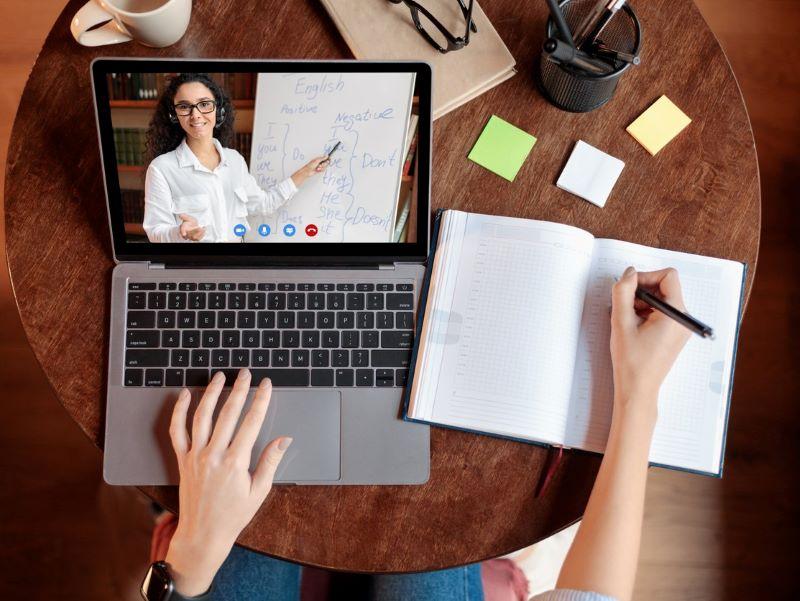
Why online learning must remain part of the education toolkit
Critics of online learning often blame the medium itself rather than ineffective instruction, when the focus should be on how to deliver the best teaching possible using all available tools and formats, writes Andreina Parisi-Amon

You may also like
Popular resources
Much has been written about the lessons from the Covid-19 induced pivot to remote learning in higher education but a recent feature in the New York Times entitled, “My college students are not OK,” caught my attention. The author – a university educator – shared his experience of poor attendance, lower-quality work, disengaged students and worse outcomes, noting that many colleagues had seen the same trends. He pleaded for more in-person classes and engagement, demonising online learning. “You can’t learn to use a microscope online,” he wrote. Although, the author noted that even now, with many students back in live classrooms, they’re still not performing to pre-pandemic levels.
Numerous studies and anecdotes point to deteriorating student performance during the pandemic and cite remote instruction as the reason. There seems to be a cause-and-effect bandwagon that a strict diet of online learning is bad for students at any level and a return to in-person instruction is the answer.
- THE Campus collection: Higher education goes hybrid
- DIY learning analytics: Using data to improve online teaching
- Experiment, test, refine: work with students to shape online courses
I’ve spent more than 15 years in both academia and industry driving innovation in education, in K-12 applied learning development, and at Coursera bringing courses from leading instructors and institutions to all students regardless of location or opportunity. I have studied educational pedagogy and analysed the results, learning from my mistakes and successes.
My conclusion? Students need the best tools we can give them, in tandem, all the time, in combinations that work for them. Those tools include remote and online instruction.
Why? For one thing, students learn at different speeds. Some students master something new the first time they try it. Others will need a great deal of repetition. It’s difficult to accommodate both in a live classroom where the real-time demands of the majority of students may dictate how much repetition can be done for those who don’t grasp a concept. For them, the ability to learn at their own pace and repeat difficult exercises is vital. Further, providing online learning options allows for the fact that some students are embarrassed to admit in front of their peers that they’re “not getting it” when everyone else seems to be. Yes, they can schedule an appointment with their instructor but there too, the ability to “repeat as necessary” may be limited by availability.
Conversely, students who grasp things quickly may want to move on to more challenging tasks. They’ll be looking to their instructor to come up with ways to challenge and take them in directions that build on their interest and curiosity.
We have a generation of young people who have grown up on personal devices that allow them to customise anything important to them: playlists, blogs, chats. They successfully communicate with friends, family and partners, expressing their passions and interests via remote devices. For the most part, they understand how to use those devices effectively for their needs. Why can’t it be the same with learning?
Online learning as part of the toolkit
I’ll be the first to admit that our rapid, Covid-19 driven switch to remote learning was not a resounding success but it was necessary given the situation at the time. Online instruction isn’t the problem. Ineffective online instruction is.
So rather than debating whether remote learning is good or bad, we should focus on how we combine it with in-person teaching to make overall education provision better for every student.
Instructors, researchers, administrators and students have spent the past two years analysing what went well, what didn’t, and how to identify areas where technology can most effectively amplify the good while minimising the bad. What’s the right combination of live, instructor-driven, and remote, tech-enabled instruction and pedagogy to get us to the next level?
The exact split will depend on the individual student and programme. This individualisation is only possible with tech tools that provide equitable access and engagement, regardless of when or how the student is engaging.
So far, we’ve learned that community is important to students and that forcing them to learn through the one-way mirror of an online meeting with minimal engagement leads to isolation. There is no shortage of communities on the internet, full of people who’ve never met in person, so we know that online-only environments can give birth to engaged people.
We’ve also learned that instructors and students need flexibility, with guard rails. We should be working toward an “anywhere, anytime” approach, using digital tools to connect students in both synchronous and asynchronous learning modes, to get the best of each. A clear definition of how each mode, in-person on campus, online, and hybrid (online students joining an on-campus class via video) is used is required, with asynchronous learning the glue that holds online learning together.
We know that edtech tools can support active learning with collaborative documents, virtual whiteboards, group discussions and presentations, and jigsaw activities. Frequent knowledge checks are made possible by real-time quizzes and polls embedded into online teaching materials, helping to keep students engaged.
Remote learning is not the problem, nor the message; it’s just the medium. It’s up to us to ensure each student gets the message so they can learn, in their own way, at their own pace. That’s the potential of remote learning – and it would be a giant step backwards to abandon it now.
Andreina Parisi-Amon is vice-president for learning and teaching at Engageli.
If you would like advice and insight from academics and university staff delivered direct to your inbox each week, sign up for the Campus newsletter.


